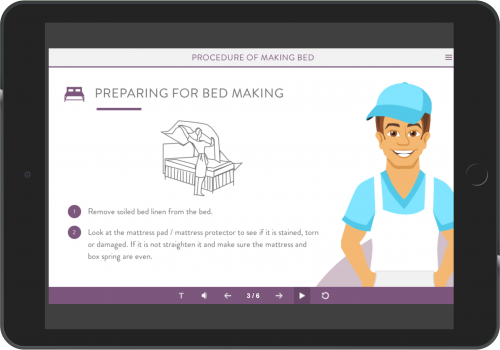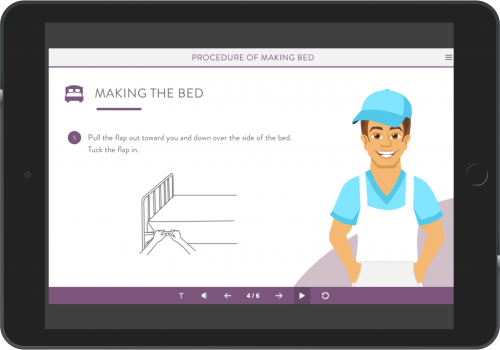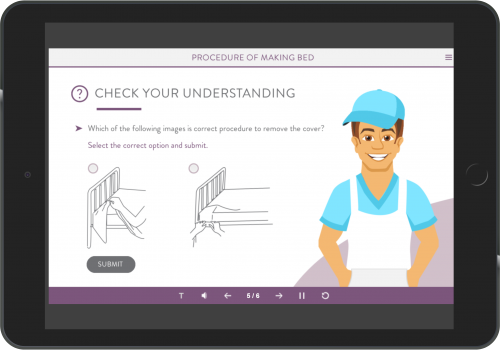Wanted to know what are the benefits of story-based-learning? Check the Striking a Nerve: The Benefits and Neurobiology of Story-Based Learning and be fully prepared for the year to come.

Stories have power. They delight, enchant, teach, recall, inspire, motivate, challenge. They imprint a picture on our minds. In this article I will be talking about benefits of story-based learning.
Introduction
It is quiet and dark. The theater is hushed. James Bond skirts along the edge of a building as his enemy takes aim. Here in the audience, heart rates increase, and palms sweat. I know this to be true because instead of enjoying the movie myself, I am measuring the brain activity of a dozen viewers.
Many L&D managers and instructional designers have already discovered the power of storytelling in a practical sense – they have observed how compelling a well-constructed narrative can be.
In my previous article on How Good Storytelling In Elearning Can Engage Learners In A Meaningful Way, I spoke about the impact of good storytelling. In this article I will dig deep into the neuroscience and benefits of story-based eLearning.
Why your brains love good story-telling?
We all enjoy a good story, whether it’s a novel, movie or simply something one of our friends are explaining to us that they’ve experienced. But, why do we feel so much more engaged when we hear a narrative about events?
It’s quite simple. If we listen to a PowerPoint presentation with boring bullet points, certain parts of the brain get activated. Scientist call these Broca’s area and Wernicke’s area. Overall, it hits our language processing parts in the brain, where we decode words into meaning. And that’s it, nothing else happens.
On the other hand, when we are being told a story, things change dramatically. Storytelling evokes a strong neurological response. During the tense moments of in the story the brain produces a stress hormone called cortisol, which allows us to focus. While the cute factors in story, brain produces oxytocin that promotes connection and empathy. A happy ending in a story triggers the limbic system, our brain’s reward center, to release dopamine which makes us feel more hopeful and optimistic.
Thus, a story can put your whole brain to work and enable an emotional connect with the learner. So, how do stories create emotional connect and how can this be used in eLearning?
How do stories impact eLearning?
In eLearning, knowing how to leverage good storytelling and foster emotional engagement in a learner is powerful. Here are five ways stories make eLearning more engaging:
Stories act as an emotional glue
Stories are the emotional glue that connects the audience to the message. Much of what people remember from a learning experience are the feelings of the underlying message rather than a multitude of small facts. Stories are an important way to tap into the heart of the audience, providing a channel for conveying a deeper message based on emotion.
Creates focused connection with the concept
A story creates the context within which knowledge arises, and hence it is the fastest, most accurate means for knowledge sharing. By telling a story, we understand the concept more than we explicitly know. Stories, thus, set stage for further learning.
Stories compel action
After listening to a story, the learner is compelled to invent a parallel story appropriate for their environment. The result is a story ‘owned’ by the learner who is simulated to co-create and ‘own’ key ideas and associated attitudes. A good story has the power to change attitudes, perceptions and ultimately behaviors.
Stories give meaning to data
Many learners perceive data as meaningless numbers. This happens when the data is disconnected to anything important in their experience. But when the data is placed in a context of a story, it comes alive. This will then be embedded in the learner’s mind forever.
Stories transcend one’s current environment
Good storytelling can transport learners out of their stuffy meeting rooms and offices into world away from workplace. In this altered reality, the mind becomes more open to perceiving and thinking in new ways. Stories are more like a refresher to prepare the learner for the training.
Let’s now have a look at a case study for which we used story-based approach.
Case Study
Hospitality Industry
In modern hospitality business, it is all about competence of people. The modern customers demand a high level of service. We developed a course for one for customers from the hospitality industry using the story-based approach. The course begins with a story where, a dissatisfied customer approaches the hotel manager and complains about the intern. She complains that her bed has not been made properly and how it has impacted her experience of the stay.
The story sets the context for the course on why it is important to keep the customer happy and hone the skills for bed-making. Thus, a story-based approach was quite useful here.



Conclusion
Story-based learning may seem like an old-fashioned tool, today – and it is. That’s exactly what makes it powerful.
We use LXD or learning experience design in a way that the courses that we build are useful and meaningful to our audiences.
Further reading:

Stories have power. They delight, enchant, teach, recall, inspire, motivate, challenge. They imprint a picture on our minds. In this article I will be talking about benefits of story-based learning.
Introduction
It is quiet and dark. The theater is hushed. James Bond skirts along the edge of a building as his enemy takes aim. Here in the audience, heart rates increase, and palms sweat. I know this to be true because instead of enjoying the movie myself, I am measuring the brain activity of a dozen viewers.
Many L&D managers and instructional designers have already discovered the power of storytelling in a practical sense – they have observed how compelling a well-constructed narrative can be.
In my previous article on How Good Storytelling In Elearning Can Engage Learners In A Meaningful Way, I spoke about the impact of good storytelling. In this article I will dig deep into the neuroscience and benefits of story-based eLearning.
Why your brains love good story-telling?
We all enjoy a good story, whether it’s a novel, movie or simply something one of our friends are explaining to us that they’ve experienced. But, why do we feel so much more engaged when we hear a narrative about events?
It’s quite simple. If we listen to a PowerPoint presentation with boring bullet points, certain parts of the brain get activated. Scientist call these Broca’s area and Wernicke’s area. Overall, it hits our language processing parts in the brain, where we decode words into meaning. And that’s it, nothing else happens.
On the other hand, when we are being told a story, things change dramatically. Storytelling evokes a strong neurological response. During the tense moments of in the story the brain produces a stress hormone called cortisol, which allows us to focus. While the cute factors in story, brain produces oxytocin that promotes connection and empathy. A happy ending in a story triggers the limbic system, our brain’s reward center, to release dopamine which makes us feel more hopeful and optimistic.
Thus, a story can put your whole brain to work and enable an emotional connect with the learner. So, how do stories create emotional connect and how can this be used in eLearning?
How do stories impact eLearning?
In eLearning, knowing how to leverage good storytelling and foster emotional engagement in a learner is powerful. Here are five ways stories make eLearning more engaging:
Stories act as an emotional glue
Stories are the emotional glue that connects the audience to the message. Much of what people remember from a learning experience are the feelings of the underlying message rather than a multitude of small facts. Stories are an important way to tap into the heart of the audience, providing a channel for conveying a deeper message based on emotion.
Creates focused connection with the concept
A story creates the context within which knowledge arises, and hence it is the fastest, most accurate means for knowledge sharing. By telling a story, we understand the concept more than we explicitly know. Stories, thus, set stage for further learning.
Stories compel action
After listening to a story, the learner is compelled to invent a parallel story appropriate for their environment. The result is a story ‘owned’ by the learner who is simulated to co-create and ‘own’ key ideas and associated attitudes. A good story has the power to change attitudes, perceptions and ultimately behaviors.
Stories give meaning to data
Many learners perceive data as meaningless numbers. This happens when the data is disconnected to anything important in their experience. But when the data is placed in a context of a story, it comes alive. This will then be embedded in the learner’s mind forever.
Stories transcend one’s current environment
Good storytelling can transport learners out of their stuffy meeting rooms and offices into world away from workplace. In this altered reality, the mind becomes more open to perceiving and thinking in new ways. Stories are more like a refresher to prepare the learner for the training.
Let’s now have a look at a case study for which we used story-based approach.
Case Study
Hospitality Industry
In modern hospitality business, it is all about competence of people. The modern customers demand a high level of service. We developed a course for one for customers from the hospitality industry using the story-based approach. The course begins with a story where, a dissatisfied customer approaches the hotel manager and complains about the intern. She complains that her bed has not been made properly and how it has impacted her experience of the stay.
The story sets the context for the course on why it is important to keep the customer happy and hone the skills for bed-making. Thus, a story-based approach was quite useful here.



Conclusion
Story-based learning may seem like an old-fashioned tool, today – and it is. That’s exactly what makes it powerful.
We use LXD or learning experience design in a way that the courses that we build are useful and meaningful to our audiences.
Further reading:
You must be logged in to post a comment.
- Most Recent
- Most Relevant






